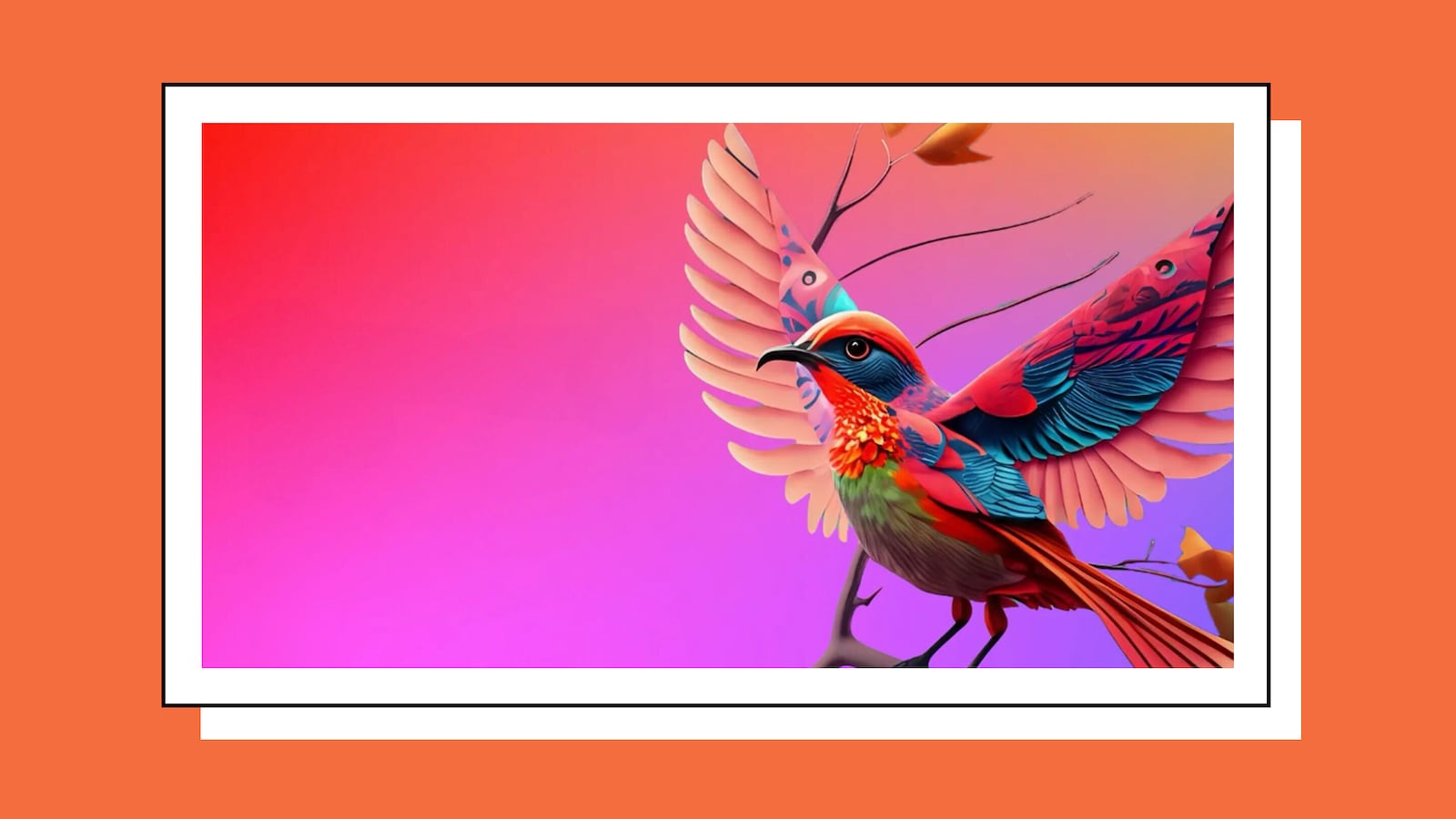By now you’ve probably heard the phrase generative AI. But what is it really? In simple terms, generative AI translates text inputs into a vast array of results like words, images, or even music. However, the rise of generative AI has opened up a can of legal worms around copyright infringement and ownership rights. Adobe’s generative AI solution—Firefly—looks to address these problems with a creator-first approach. Recently, Adobe released messaging detailing their considerations for creating a more ethical form of generative AI.
How Does Generative AI Work?

The image above looks like a photo that could be in a nature magazine. However, this photo wasn’t captured by a fearless photographer in a ghillie suit—it was generated using Adobe’s AI. How? AI models—like Firefly—are trained on vast collections of existing content to learn patterns, features, and style. For example, let’s say you ask AI to generate an image of an ice cream cone eating another ice cream cone. The algorithm references all the images it’s “seen” of ice cream cones and people eating ice cream. Then, uses its understanding of what “ice cream” and “eating” looks like to create an image that matches your initial input.
Ethical Issues With Generative AI
If generative AI requires millions of inputs to train on, where are those images, videos, and texts coming from? This is where possible ethical–and legal–problems pop up. If the AI model is trained on copyrighted material, this raises the issue of copyright infringement. Think about the millions of images that the AI model was trained on: that’s millions of creators’ work being used without their permission in a way they might not agree with.
AI companies posit that this is no different than how every human learns; the AI model, much like a child, is being inspired by the things it “sees” in the world. However, artists and writers worry if every key they strike or line they draw will contribute to an AI model that could replace them in the future.
Adobe sees AI as a powerful tool that can be developed responsibly and enhance—but not replace—human creativity.
Adobe’s Approach
Adobe designed Firefly—from the ground up—to be commercially safe for creators and users alike. Adobe Firefly is trained on a dataset of licensed content, such as Adobe Stock, and public domain content where copyright has expired. Creators who authorize their content to be used in training Firefly are compensated by Adobe. Anything created in Adobe Firefly is owned fully by the creator, where some other generative AI tools own the rights to anything they produce.
Adobe is also a founding member of the Content Authenticity Initiative (CAI), which focuses on ensuring transparency in content creation and ownership. This innovative system (called Content Credentials) records and displays the most important details about a piece of content at each step of its lifecycle. From creation (showing the tools used whether that’s AI, software, or cameras), to editing (every change to the original image is tracked), to publishing (giving access to the edit history): the Content Credentials system remains consistent across every iteration of the image. This offers an unprecedented level of transparency for digital content that’s accessible to anyone using Adobe Firefly.
Adobe is also exploring ways for creators to be able to train the machine learning model with their own assets. This way creators can generate content that matches their unique style without the influence of other creators’ content.
How to Start Using Adobe Firefly Today
You don’t have to wait to get your creative juices flowing with Adobe Firefly. It’s available right now in all of Adobe’s Creative Cloud apps (Photoshop, Illustrator, Adobe Express, Substance 3D, InDesign, Lightroom and Adobe Stock).
Adobe Firefly isn’t just for generating extraordinary images from scratch. Want to remove the bystander ruining your incredible shot of the sunset? You can do that with Firefly in Lightroom. Do you have a photo you want to use as a wallpaper, but the dimensions are just not right? Use Firefly’s generative fill to expand the image in Photoshop. With Firefly, you can create and generate with confidence, knowing your work or the work of other creators will be protected from misuse.
Click here to download Adobe Creative Cloud today.
If you buy something from this post, we may earn a small commission.





